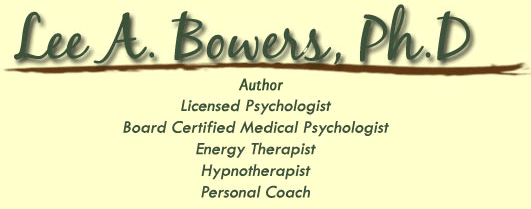Are You a Slave to the Seasons (or other allergens)?
By Lee A. Bowers, Ph.D.
An estimated 50 million Americans suffer from all types of allergies. This includes indoor/outdoor, food & drug, latex, skin and eye allergies. Allergy is the 5th leading chronic disease in the United States among all ages, and the 3rd common chronic disease among children under 18 years old.
People with allergies usually have more than one type. Approximately 75% of all sufferers have an indoor/outdoor inhalant substance as their primary allergy. About 10 million people are allergic to cat dander, the most common pet allergy. The most common indoor/outdoor triggers are pollen, dust and mold, and pet dander.
Approximately 7% of allergy sufferers have skin or contact allergies as their primary allergy. This includes eczema, hives, and dermatitis. Approximately 6% of sufferers have food and drug allergies. Food allergies are more common among children than adults, and 90% of all food allergies are caused by 8 foods: milk, soy, eggs, wheat, peanuts, tree nuts, fish and shellfish. Penicillin is the most common drug allergy. If you are allergic to Penicillin, you must always be alert to the possibility that you might be allergic or other drug families also.
Nearly 400 Americans die each year as a result of an allergic reaction to either prescription or OTC medications. More than 200 deaths occur each year because of food allergies. Nearly 100 Americans die each year from insect allergies, and 10 deaths occur annually as a result of severe reactions to latex allergies. These statistics do not include costs related to chronic asthma, which affects around 20 million Americans.
Another distressing symptom many people have, who might not have even considered allergies, is chronic fatigue, and insomnia. Studies also show that reading, writing, and allergies do not mix well. On any given school day, over 10,000 children might be absent because of allergic complications. Even children who do attend school despite the itchy eyes, rhinitis, itchy palate, have a difficult concentrating and do not perform well in school. These children are often inappropriately labeled as hyperactive, or psychologically troubled.
Allergies are basically an overreaction to a trigger in the environment that one�s immune system inaccurately perceives as an �enemy,� which needs to be attacked and destroyed. A variety of factors can lead to this kind of misperception, but most often stress or some kind of trauma leads to a weakening or depletion of the immune system in the body.
There are almost as many opinions about the treatment of allergies, as there are allergies. Traditional treatments often include medication, which has side effects, and a desensitizing of the immune system by allowing the body to be exposed to the offending agent in small amounts, usually through multiple needle experiences over a period of time. This has to be done for each individual trigger or class of triggers, and often by the time treatment is complete, the body has learned to use its attack response with new triggers.
There are also various holistic, drug-free non-medical processes available to treat allergies. For over 5,000 years, the Chinese believed the cause of all chronic ailments can be traced to a disruption in the body�s energy system. Just as proper blood circulation is essential to our health, so is the proper flow of energy, or �Chi.�
A few years ago, I observed at a workshop the allergy treatment of a 48 year old registered nurse, who had suffered from asthma, seasonal and food allergies, (in particular, shellfish) most of her life. She had experienced several years of desensitizing allergy injections which she gave herself three times a week for two years, had been hospitalized as a child numerous times related to exacerbated episodes of asthma, and was currently using nebulizer treatments and prescribed pills and inhalers. She was unable to walk into a room or house where shellfish was being cooked, without have a severe asthmatic episode, which on two occasions sent her to the emergency room.
The intervention she received was the Neuromodulation Technique (NMT). After working in and experiencing a lifetime of traditional Western medicine, this method satisfied her need to work with something that was based on scientific and physiologic principles. As a back up �plan B,� there was a physician present in the room, along with an �epi-pen� in the event conventional medical intervention was necessary. The practitioner was Dr. Leslie Feinberg, the developer of NMT. Feinberg says the brain works much like a computer and misperceptions by the autonomic nervous system and the immune system (which is what an allergy essentially is) are like �bugs� in a program, so like a computer, the body can be debugged and reprogrammed.
This �reprogramming� session took about twenty minutes. There was no discomfort involved (other than being in front of a roomful of practitioners!). Afterwards, she was presented with a platter of shrimp, and for the first time in her life, tasted shrimp. Nothing happened! The next day, with Dr. Feinberg and me, she ate shrimp again. Nothing happened, except that she was surprised it wasn�t more tasty! To date, she has eaten shellfish a total of seven times, without symptoms.
Since then, I have had similar experiences with NMT in my own practice � with common seasonal allergies, horrible food allergies (yes, even peanuts), and all kinds of other ailments. It is especially heartwarming for me, an animal lover, to help children eliminate allergies to dogs or cats so they can have a pet.
I continue to marvel at how the body, with just a little help and direction, is really capable of healing itself.
Dr. Bowers is a health psychologist in Villanova and semi-regular contributor to Yoga Living. You can contact her at: 610-520-0443, leebowers@comcast.net , or www.drleebowers.com.

